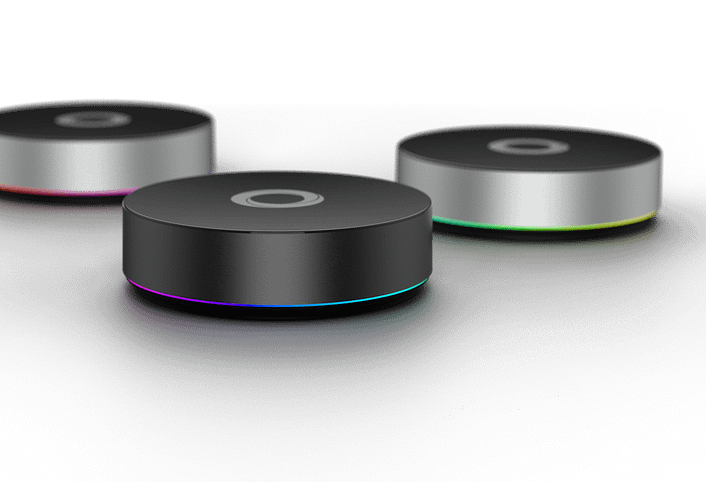
In een tijd waarin de beveiliging van uw huis belangrijker is dan ooit, biedt de integratie van technologie in ons dagelijks leven talloze mogelijkheden om de veiligheid te verbeteren.
Een van de meest effectieve en gebruiksvriendelijke manieren om de beveiliging van uw huis te verbeteren, is door te investeren in draadloze detectoren. Deze innovatieve apparaten bieden niet alleen gemoedsrust, maar zijn ook eenvoudig te installeren en te gebruiken, waardoor ze een uitstekende keuze zijn voor huiseigenaren die hun veiligheid willen verbeteren.
Draadloze detectoren begrijpen
Draadloze detectoren zijn er in verschillende vormen, elk ontworpen om specifieke beveiligingsbehoeften aan te pakken. De meest voorkomende typen zijn:
- Bewegingsdetectoren: Deze apparaten gebruiken infraroodtechnologie om beweging te detecteren en kunnen zowel binnen als buiten worden geplaatst. Wanneer ze worden geactiveerd, sturen ze waarschuwingen naar uw mobiele apparaten of een centraal beveiligingssysteem, zodat u snel kunt reageren.
- Deur- en raamsensoren: Deze sensoren zijn ontworpen om u te waarschuwen wanneer deuren of ramen worden geopend. Ze kunnen ook worden geïntegreerd met uw alarmsysteem om meldingen en afschrikmiddelen te bieden tegen ongeautoriseerde toegang.
- Rook- en koolmonoxidemelders: Essentieel voor brandveiligheid, deze detectoren bewaken de luchtkwaliteit in uw huis. Draadloze modellen kunnen u waarschuwen via smartphonemeldingen, zelfs als u weg bent, zodat u op de hoogte bent van eventuele gevaren.
- Waterlekdetectoren:Deze apparaten detecteren overtollig vocht en helpen mogelijke waterschade te voorkomen, die kostbaar en verstorend kan zijn.
- Glasbreuksensoren:Deze sensoren kunnen het geluid van brekend glas waarnemen en activeren een alarm als er mogelijk wordt ingebroken.
Voordelen van draadloze detectoren
Een van de belangrijkste voordelen van draadloze detectoren is hun eenvoudige installatie. In tegenstelling tot vaste systemen, die vaak professionele installatie vereisen en uw huis kunnen verstoren, worden draadloze detectoren doorgaans geleverd met plakstrips of eenvoudige montagebeugels. De meeste modellen werken op batterijen, waardoor er geen ingewikkelde bedrading nodig is.
Een ander belangrijk voordeel is flexibiliteit. Draadloze detectoren kunnen eenvoudig worden verplaatst, waardoor u de beveiliging van uw huis naar wens kunt aanpassen. Dit is vooral handig als u uw woonruimtes vaak opnieuw indeelt of als u een woning huurt waar permanente aanpassingen geen optie zijn.
Integratie met Smart Home-systemen
Veel draadloze detectoren kunnen naadloos worden geïntegreerd met bestaande smart home-systemen. Dit betekent dat u ze kunt bedienen vanaf uw smartphone of tablet, schema's kunt instellen en realtime meldingen kunt ontvangen. Sommige systemen kunnen zelfs verbinding maken met slimme thermostaten en verlichting, zodat u geautomatiseerde reacties kunt maken, zoals het inschakelen van lampen wanneer een bewegingssensor wordt geactiveerd, voor extra beveiliging.
Selectietips
Houd bij het selecteren van draadloze detectoren voor uw huis rekening met het volgende:
- Verenigbaarheid: Zorg ervoor dat de detectoren die u kiest compatibel zijn met uw bestaande slimme apparaten voor thuisgebruik.
- BereikControleer het werkingsbereik van elk apparaat om er zeker van te zijn dat het aan uw behoeften voldoet, vooral in grotere huizen.
- Levensduur van de batterij: Kies detectoren met een batterij die lang meegaat en waarvan de compartimenten gemakkelijk toegankelijk zijn voor het vervangen van de batterij.
- Waarschuwingen en meldingen: Kies modellen met aanpasbare meldingen, zodat u meldingen ontvangt die zijn afgestemd op uw voorkeuren.
Conclusie
Investeren in draadloze detectoren is een praktische stap om de beveiliging van uw huis te verbeteren. Deze eenvoudig te installeren apparaten kunnen u helpen verschillende potentiële bedreigingen te bewaken, van inbraken en brandgevaren tot milieuproblemen zoals waterlekken. Door deze technologische ontwikkelingen in uw huis te integreren, kunt u een veiligere, meer beveiligde leefomgeving creëren voor u en uw gezin.
Of u nu kiest voor een uitgebreid beveiligingssysteem of een paar detectoren aan uw huis toevoegt, het belangrijkste is om op de hoogte te blijven en proactief te zijn over uw veiligheid. Met draadloze detectoren is gemoedsrust slechts een eenvoudige installatie verwijderd.




